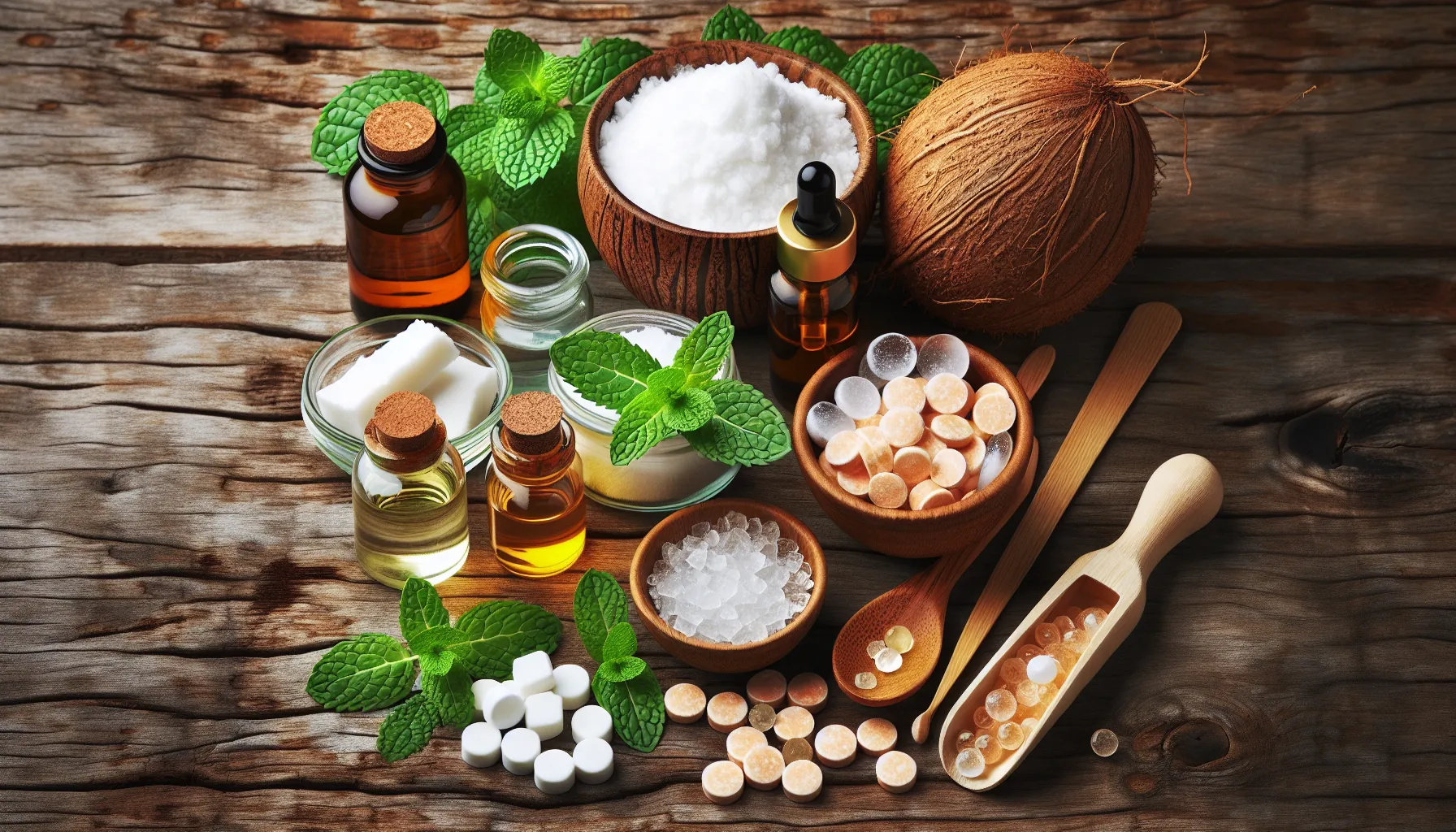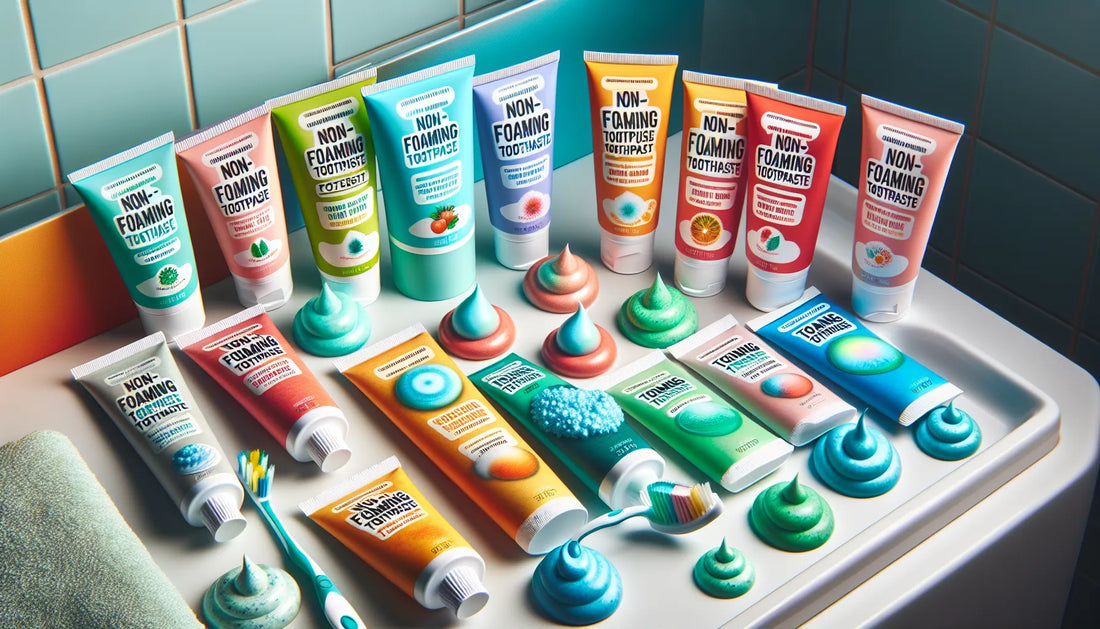The Potential Benefits of Non-Foaming Toothpaste
When it comes to oral hygiene, the choice of toothpaste can significantly impact your dental health. While traditional toothpaste offers a familiar foamy experience, a growing number of individuals are turning to non-foaming alternatives. This shift is driven by the recognition that the foaming agent, sodium lauryl sulfate (SLS), found in many toothpaste brands, can cause irritation and dryness in the mouth for some individuals. As a result, non-foaming toothpaste is gaining popularity as a gentler and potentially more effective alternative for maintaining dental health. In this exploration, we will delve into the potential benefits of non-foaming toothpaste, including its ability to reduce irritation, its suitability for individuals with sensitive gums, and its overall impact on oral health. By understanding the advantages of non-foaming toothpaste, you can make an informed decision about the best oral care products for your specific needs. Join us as we uncover the potential benefits of making the switch to non-foaming toothpaste for a healthier, happier smile.
Comparison with Foaming Toothpaste
When it comes to toothpaste, the debate between foaming and non-foaming toothpaste has been ongoing. Let's delve into the differences in ingredients, effectiveness in cleaning, and the myth surrounding SLS-free toothpaste.
Differences in Ingredients
Foaming toothpaste typically contains sodium lauryl sulfate (SLS), a surfactant responsible for the foaming action. On the other hand, SLS-free toothpaste uses alternative foaming agents such as cocamidopropyl betaine or sodium lauroyl sarcosinate. While SLS has been linked to potential irritation for some individuals, SLS-free toothpaste offers a gentler option for those with sensitive gums or allergies.
Effectiveness in Cleaning
One common question that arises is whether foaming toothpaste cleans better than its non-foaming counterpart. The foaming action of SLS in toothpaste helps distribute the paste more evenly throughout the mouth, reaching areas that might be missed with non-foaming toothpaste. However, studies have shown that the effectiveness of cleaning is not solely dependent on the foaming action but rather on the overall formulation and the presence of key cleaning agents such as fluoride and abrasives.
Why Do People Like Foamy Toothpaste? Does It Clean Better?
The foaming action of toothpaste creates a perception of cleanliness and freshness, which many people associate with effective cleaning. The sensation of foam in the mouth can give the impression of a thorough cleaning experience. However, it's important to note that the foaming action itself does not necessarily equate to superior cleaning. It's more about the overall formulation and the presence of essential cleaning agents that determine the toothpaste's effectiveness in maintaining oral hygiene.
Clearing the Myth: Does SLS-Free Toothpaste Clean Your Teeth Properly?
There's a common misconception that SLS-free toothpaste may not clean teeth as effectively as foaming toothpaste. However, numerous studies have debunked this myth. SLS-free toothpaste can indeed clean teeth properly, provided it contains the necessary cleaning agents such as fluoride and abrasives. The absence of SLS does not compromise the toothpaste's ability to maintain oral hygiene. In fact, for individuals with sensitivities or allergies, SLS-free toothpaste can offer a gentler yet equally effective cleaning experience.
The choice between foaming and non-foaming toothpaste ultimately comes down to personal preference and individual oral health needs. While foaming toothpaste may provide a familiar sensation of cleanliness, SLS-free toothpaste offers a viable alternative for those seeking a gentler option. Both types of toothpaste can effectively clean teeth when formulated with the right ingredients, debunking the myth that foaming toothpaste is inherently superior in cleaning. It's essential to prioritize the presence of key cleaning agents and consider individual sensitivities when selecting the most suitable toothpaste for maintaining optimal oral hygiene.

Impact on Dental Health
Reduced Abrasiveness
When it comes to dental health, the choice of toothpaste can have a significant impact. Many traditional toothpaste brands contain an ingredient called sodium lauryl sulfate (SLS), which is responsible for creating the foaming action that we often associate with tooth brushing. However, this foaming action is not necessary for effective cleaning. In fact, SLS can be quite abrasive and may contribute to enamel erosion over time. By choosing a toothpaste without SLS, you can reduce the abrasiveness of your oral care routine and help protect your enamel.
Potential for Improved Gum Health
SLS has been known to cause irritation in some individuals, particularly those with sensitive gums. This can lead to discomfort and may exacerbate existing gum issues. By opting for an SLS-free toothpaste, you can potentially improve your gum health by reducing the likelihood of irritation and inflammation. This is especially important for individuals who are prone to gum sensitivity or who have conditions such as gingivitis.
Oral Health Side-Effects of SLS
The oral health side-effects of SLS can be quite significant for some individuals. As mentioned earlier, it can contribute to enamel erosion and gum irritation. Additionally, some people may experience canker sores or mouth ulcers as a result of SLS. These side-effects can be uncomfortable and may detract from the overall oral care experience. By understanding the potential impact of SLS on oral health, individuals can make more informed choices when selecting oral care products.
Debunking the Myth of Foaming Toothpaste
One common misconception about toothpaste is that it needs to foam in order to be effective. This belief is largely due to the marketing and advertising of traditional toothpaste brands. In reality, the foaming action is simply a byproduct of the SLS ingredient and does not necessarily contribute to the cleaning power of the toothpaste. SLS-free toothpaste formulations can effectively clean and protect the teeth and gums without the need for excessive foaming. By debunking this myth, individuals can feel more confident in choosing non-foaming toothpaste options that prioritize their oral health.
The choice of toothpaste can have a significant impact on dental health. By opting for an SLS-free toothpaste, individuals can reduce abrasiveness, potentially improve gum health, and minimize the risk of oral health side-effects associated with SLS. It's important to recognize that toothpaste doesn't need to foam to work effectively, and by understanding these factors, individuals can make more informed decisions to support their overall oral health and well-being.

Usage and Application
Proper Technique for Non-Foaming Toothpaste
Non-foaming toothpaste has gained popularity due to its natural ingredients and gentle cleaning action. However, using non-foaming toothpaste requires a slightly different technique compared to traditional foaming toothpaste. Here are some tips for using non-foaming toothpaste effectively:.
Use a Pea-Sized Amount : Non-foaming toothpaste doesn't require the excessive amount that foaming toothpaste does. A pea-sized amount is sufficient for thorough cleaning.
Brush Gently : Since non-foaming toothpaste doesn't produce the same foamy lather, it's important to brush gently and thoroughly to ensure all areas are covered.
Allow for Longer Brushing Time : Without the foaming action, it's essential to brush for a longer duration to achieve the same level of cleanliness. Aim for at least two minutes of brushing.
Rinse Thoroughly : After brushing, rinse your mouth thoroughly to remove any remaining toothpaste residue.
Be Patient : It may take some time to adjust to the lack of foam, but with consistent use, you'll become accustomed to the non-foaming experience.
Transitioning from Foaming to Non-Foaming
Transitioning from foaming to non-foaming toothpaste can be a significant change for some individuals. Here are some tips to make the transition smoother:.
Start with a Familiar Flavor : If you're used to a specific flavor of foaming toothpaste, look for a non-foaming toothpaste in the same flavor to ease the transition.
Gradual Introduction : Consider using non-foaming toothpaste for one of your daily brushing sessions initially, while continuing to use your regular foaming toothpaste for the others. Gradually increase the frequency of non-foaming toothpaste until you're comfortable using it exclusively.
Educate Yourself : Learn about the benefits of non-foaming toothpaste, such as its natural ingredients and gentle cleaning action. Understanding the advantages can make the transition more appealing.
Seek Recommendations : Ask for recommendations from friends, family, or dental professionals who have successfully transitioned to non-foaming toothpaste. Their experiences and insights can be valuable in making the switch.
Give it Time : It's normal to feel a difference when switching to non-foaming toothpaste. Give yourself time to adjust and allow your oral care routine to adapt to the change.
By following these tips, you can effectively use non-foaming toothpaste and smoothly transition from traditional foaming toothpaste, ultimately embracing the benefits of a natural and gentle oral care experience.

Conclusion
The use of non-foaming toothpaste can offer several benefits for your dental health, including reduced irritation, better fluoride contact with teeth, and a more enjoyable brushing experience. By opting for non-foaming toothpaste, you may be able to improve your overall oral hygiene routine. To explore a range of non-foaming toothpaste options and discover the potential benefits for yourself, visit. toothpow.com . Stay informed and take proactive steps towards better dental health.


